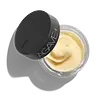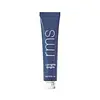What's inside
What's inside
 Key Ingredients
Key Ingredients

 Benefits
Benefits

 Concerns
Concerns

 Ingredients Side-by-side
Ingredients Side-by-side

Ricinus Communis Seed Oil
MaskingTriisostearoyl Polyglyceryl-3 Dimer Dilinoleate
EmollientOleic/Linoleic/Linolenic Polyglycerides
EmollientSqualane
EmollientGlyceryl Rosinate
PerfumingHydrogenated Vegetable Oil
EmollientRhus Verniciflua Peel Cera
EmollientHelianthus Annuus Seed Oil
EmollientPhytosteryl Canola Glycerides
Skin ConditioningCarthamus Tinctorius Seed Oil
MaskingAroma
Simmondsia Chinensis Seed Oil
EmollientPhospholipids
Skin ConditioningPolyglyceryl-3 Diisostearate
EmulsifyingCaprylic/Capric Triglyceride
MaskingTocopherol
AntioxidantPunica Granatum Flower Extract
Skin ConditioningAscorbyl Palmitate
AntioxidantAgave Tequilana Leaf Extract
AstringentMomordica Grosvenorii Fruit Extract
AntioxidantChamomilla Recutita Flower Extract
MaskingTocopheryl Acetate
AntioxidantLimonene
PerfumingLinalool
PerfumingRicinus Communis Seed Oil, Triisostearoyl Polyglyceryl-3 Dimer Dilinoleate, Oleic/Linoleic/Linolenic Polyglycerides, Squalane, Glyceryl Rosinate, Hydrogenated Vegetable Oil, Rhus Verniciflua Peel Cera, Helianthus Annuus Seed Oil, Phytosteryl Canola Glycerides, Carthamus Tinctorius Seed Oil, Aroma, Simmondsia Chinensis Seed Oil, Phospholipids, Polyglyceryl-3 Diisostearate, Caprylic/Capric Triglyceride, Tocopherol, Punica Granatum Flower Extract, Ascorbyl Palmitate, Agave Tequilana Leaf Extract, Momordica Grosvenorii Fruit Extract, Chamomilla Recutita Flower Extract, Tocopheryl Acetate, Limonene, Linalool
Hydroxystearic/Linolenic/Oleic Polyglycerides
EmollientTheobroma Cacao Seed Butter
EmollientHelianthus Annuus Seed Oil
EmollientButyrospermum Parkii Butter
Skin ConditioningEuterpe Oleracea Sterols
Skin ConditioningCopernicia Cerifera Wax
Polyhydroxystearic Acid
EmulsifyingDimer Dilinoleyl Dimer Dilinoleate
EmollientSimmondsia Chinensis Seed Oil
EmollientCoco-Caprylate/Caprate
EmollientTerminalia Ferdinandiana Seed Oil
AntioxidantVanillin
MaskingAnthemis Nobilis Flower Oil
MaskingPunica Granatum Flower Extract
Skin ConditioningPolyglyceryl-3 Diisostearate
EmulsifyingTocopherol
AntioxidantCetearyl Ethylhexanoate
EmollientSorbitan Isostearate
EmulsifyingCentella Asiatica Leaf Extract
Skin ConditioningPortulaca Pilosa Extract
Skin ConditioningSucrose Cocoate
EmulsifyingPalmitoyl Tripeptide-38
Skin ConditioningLimonene
PerfumingLinalool
PerfumingHydroxystearic/Linolenic/Oleic Polyglycerides, Theobroma Cacao Seed Butter, Helianthus Annuus Seed Oil, Butyrospermum Parkii Butter, Euterpe Oleracea Sterols, Copernicia Cerifera Wax, Polyhydroxystearic Acid, Dimer Dilinoleyl Dimer Dilinoleate, Simmondsia Chinensis Seed Oil, Coco-Caprylate/Caprate, Terminalia Ferdinandiana Seed Oil, Vanillin, Anthemis Nobilis Flower Oil, Punica Granatum Flower Extract, Polyglyceryl-3 Diisostearate, Tocopherol, Cetearyl Ethylhexanoate, Sorbitan Isostearate, Centella Asiatica Leaf Extract, Portulaca Pilosa Extract, Sucrose Cocoate, Palmitoyl Tripeptide-38, Limonene, Linalool
Ingredients Explained
These ingredients are found in both products.
Ingredients higher up in an ingredient list are typically present in a larger amount.
Helianthus Annuus Seed Oil is the oil derived from the seeds of a Sunflower. Sunflower seed oil is non-fragrant. It is an emollient, meaning it helps to soften the skin.
Sunflower seed oil contains many fatty acids. The fatty acids found in sunflower seeds include (from highest amount to least): linoleic acid, myristic acid, palmitic acid, stearic acid, arachidic acid, oleic acid, and linolenic acid.
These fatty acids help the skin create ceramides. Ceramides play a role in repairing the skin barrier.
Helianthus Annuus Seed Oil helps moisturize the skin. This in turn helps the skin look more rejuvenated and smoother.
Sunflowers are rich in vitamin E.
Historians believe Indigenous cultures of North America domesticated sunflowers before corn. Thus they relied on sunflower oil for a variety of uses. One such use is moisturizing skin and hair.
Sunflower seed oil may not be fungal acne safe. We recommend speaking with a professional if you have any concerns.
Learn more about Helianthus Annuus Seed OilLimonene is a fragrance that adds scent and taste to a formulation.
It's found in the peel oil of citrus fruits and other plants such as lavender and eucalyptus. The scent of limonene is generally described as "sweet citrus".
Limonene acts as an antioxidant, meaning it helps neutralize free radicals.
When exposed to air, oxidized limonene may sensitize the skin. Because of this, limonene is often avoided by people with sensitive skin.
The term 'fragrance' is not regulated in many countries. In many cases, it is up to the brand to define this term. For instance, many brands choose to label themselves as "fragrance-free" because they are not using synthetic fragrances. However, their products may still contain ingredients such as essential oils that are considered a fragrance.
Learn more about LimoneneLinalool is a fragrance and helps add scent to products. It's derived from common plants such as cinnamon, mint, citrus, and lavender.
Like Limonene, this ingredient oxidizes when exposed to air. Oxidized linalool can cause allergies and skin sensitivity.
This ingredient has a scent that is floral, spicy tropical, and citrus-like.
Learn more about LinaloolPolyglyceryl-3 Diisostearate is an emulsifer and emollient. It comes from Isostearic Acid and Polyglycerin-3.
As an emulsifier, it helps stabilize products by preventing oils and water from separating.
This ingredient may not be Malassezia folliculitis, or fungal acne safe.
Learn more about Polyglyceryl-3 DiisostearatePomegranate flower extract has skin conditioning properties.
According to analysis of the flower, it is rich in the triterpenes ursolic acid and oleanolic acid.
Triterpenes are chemical compounds found in various plants such as pomegranates, apples, basil, and rosemary. They have been shown to have anti-inflammatory and antioxidant properties.
The flowers also contain gallic acid and ellagic acid, two types of polyphenols. They possess antioxidant, anti-inflammatory, and antimicrobial properties.
A study from 2017 found pomegranate flower to help heal scars and wounds in rats. Another study from 2020 found this ingredient to help decrease lip wrinkles and increase lip volume.
This ingredient also showed positive effects on dandruff removal in a study from 2015.
Learn more about Punica Granatum Flower ExtractThis oil comes from the seeds of the desert shrub called Jojoba. It is more commonly known as jojoba oil, a non-comedogenic oil.
Jojoba oil does not contain fragrance and has many fatty-acids, making it a great soothing ingredient.
It also contains Vitamin E, a great moisturizing ingredient. Vitamin E is also an antioxidant and protects your skin against oxidative damage.
This ingredient humectant properties, meaning it helps draw moisture from the air. This helps keep your skin hydrated.
While jojoba has antibacterial properties, it is only able to kill some strains of bacteria.
Studies also show it helps in wound healing. In fact, Indigenous cultures have used jojoba as a moisturizer and to help treat burns for centuries.
Fun fact: Jojoba oil similar to natural human skin sebum, so it has a great effect on dry skin. It is also promising with helping to regulate sebum production.
Due to its fatty acid content, Jojoba oil may not be fungal acne safe. We recommend speaking with a professional if you have any concerns.
Learn more about Simmondsia Chinensis Seed OilTocopherol (also known as Vitamin E) is a common antioxidant used to help protect the skin from free-radicals and strengthen the skin barrier. It's also fat soluble - this means our skin is great at absorbing it.
Vitamin E also helps keep your natural skin lipids healthy. Your lipid skin barrier naturally consists of lipids, ceramides, and fatty acids. Vitamin E offers extra protection for your skin’s lipid barrier, keeping your skin healthy and nourished.
Another benefit is a bit of UV protection. Vitamin E helps reduce the damage caused by UVB rays. (It should not replace your sunscreen). Combining it with Vitamin C can decrease sunburned cells and hyperpigmentation after UV exposure.
You might have noticed Vitamin E + C often paired together. This is because it is great at stabilizing Vitamin C. Using the two together helps increase the effectiveness of both ingredients.
There are often claims that Vitamin E can reduce/prevent scarring, but these claims haven't been confirmed by scientific research.
Learn more about Tocopherol